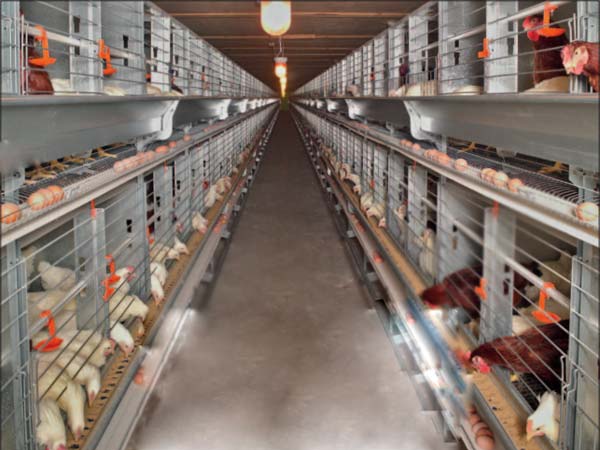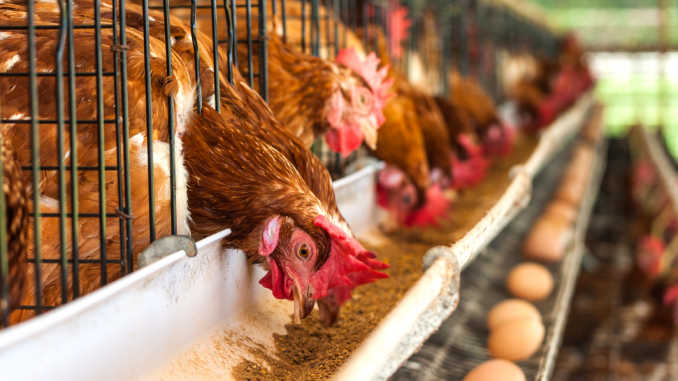Light is one of the necessary environmental conditions for laying hens. The intensity, time and color of light are very important for chicken activities, metabolism, growth and productivity, especially for laying hens raised in layer battery cage equipment. Reasonable control of light can improve the production capacity of laying hens and the economic benefits of farmers.

1. The effect of light on laying hens
Light stimulates the hypothalamus directly through the skull or light through the nerve pathway of the nerve lobe. After the hypothalamus is stimulated, it secretes gonadotropin-releasing hormone, which reaches the anterior pituitary through the pituitary portal system, causing follicles The secretion of stimulating hormones and ovulation hormones promote the development of follicles and then ovulation. The developing follicles produce estrogen, which promotes the development and function of the hen’s fallopian tubes. At the same time, estrogen also promotes calcium metabolism to facilitate the formation of eggshells. Ovulation hormones Causes hens to ovulate. In a closed chicken house, no matter how nature changes day and night. The laying of eggs by hens is mostly concentrated in the first 2-7 hours of artificial light.
2. Control of lighting technology
1. Lighting time. The length of lighting time is closely related to the age of sexual maturity of chickens. Too short light time during the rearing period will delay sexual maturity, and too long time will lead to early sexual maturity.
2. Light intensity. Appropriate light intensity is conducive to the normal growth and development of chickens. Excessive light can make chickens irritable and cause severe pecking, prolapse or nervousness. The sudden increase in light intensity during the laying period can significantly increase the rate of cracked eggs, soft-skinned eggs, deformed eggs, and sudden death; low illumination can accelerate the deposition of body fat, but the illumination is too low. It will reduce the chicken's feed intake, reduce drinking water, hinder growth and development, and reduce egg production.

There are four ways to control the light intensity: one is to control the intensity by increasing or decreasing the number of bulbs; the other is to adjust the intensity by changing the bulbs of different power; the third is to control the intensity by adjusting the voltage; the fourth is to control the intensity by adjusting the spacing. But no matter how you adjust, each time you turn on and turn off the lights, you must gradually change from dark to bright, from bright to dark, to give the chickens an adaptation process to prevent frightening the flock. The distance between the bulbs should be 1.5 times the height of the bulb from the ground; the distance between the lamp and the wall should be half the distance between the bulbs, and the lamps between rows should be arranged in a staggered manner to obtain a more uniform lighting effect.
3. Light color. Laying hens are more sensitive to color. Chickens have better vision under red, orange and yellow light. Under red light, it tends to be quiet, with very few pecking habit, a little later in maturity, high feed reward, and egg production slightly increased; yellow light reduces feed reward, delayed sexual maturity, increased egg weight, decreased egg production, and increased pecking ; Green light can make sexual maturity earlier and weight gain faster; blue light can reduce hen egg production.
